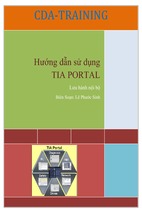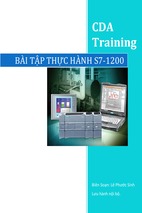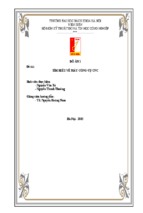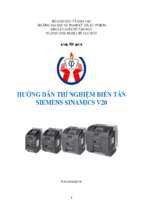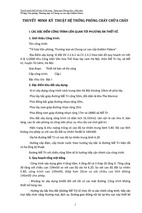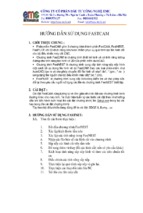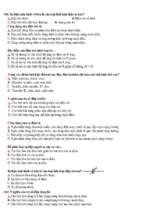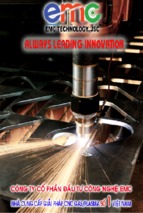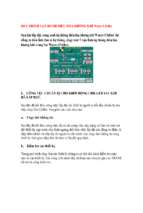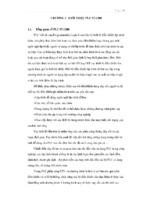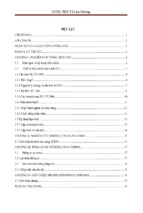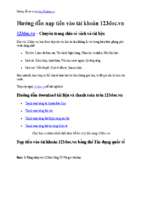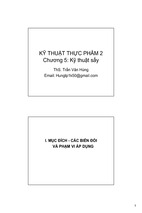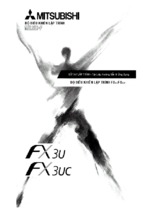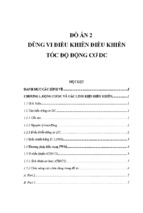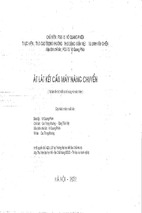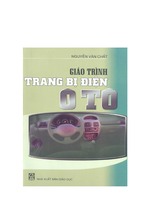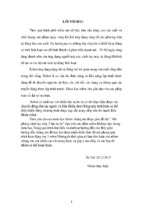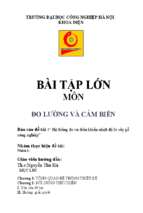Mô tả:
Sustainable Manufacturing and Factory
Planning
Industrial Product-Service Systems – IPS²
07.04.2017
Technische Universität Berlin
Institute for Machine Tools and Factory Management
Univ.-Prof. Dr.-Ing. Holger Kohl
© IWF TU Berlin
Page 1
Content
Economical and Ecological Motivation
IPS² in History
IPS² Business Models
Products, Services and Systems
Technical Solutions
Literature and References
Technische Universität Berlin
Institute for Machine Tools and Factory Management
Univ.-Prof. Dr.-Ing. Holger Kohl
Page 2
Content
Economical and Ecological Motivation
IPS² in History
IPS² Business Models
Products, Services and Systems
Technical Solutions
Literature and References
Technische Universität Berlin
Institute for Machine Tools and Factory Management
Univ.-Prof. Dr.-Ing. Holger Kohl
Page 3
Economical dimension
Competitive Environment analysis: 5 Forces model
www.made-in-china.com
www. ud-germany.de
Example: Analysis of DMG competitive environment. Market: Cutting Machines
Threat of New Entrants
Cutting machine tools production in
China (1st worldwide in 2012 - 3rd in
2002, 19.1 MM€ turnover/annum)
DMU 40 Steel Laser Cutting Machine, DMG
Waterjet Metal Cutting Machine,
Diamond Industrial China
Suppliers‘ Bargaining Power
Customers‘ Bargaining Power
Transfer of the rising raw material
costs, e.g. for steel and copper, to
the machine tools producer
Rivalry among existing
competitors
Price drop due to overcapacity
within the machine tools suppliers
and stagnating demand
Threat of Substitution Products
New technologies for cutting:
e.g. water jet cutting machines may
replace laser cutting machines.
Technische Universität Berlin
Institute for Machine Tools and Factory Management
Univ.-Prof. Dr.-Ing. Holger Kohl
Quelle: [Por-85]
Page 4
Ecological Dimension
Reducing environmental impacts
Impact
=
Population
# 𝑜𝑓 𝑝𝑒𝑟𝑠𝑜𝑛𝑠
x
Amenity
𝑒𝑞𝑢𝑖𝑝𝑚𝑒𝑛𝑡
𝑝𝑒𝑟𝑠𝑜𝑛
x
Technology
𝑖𝑚𝑝𝑎𝑐𝑡
𝑒𝑞𝑢𝑖𝑝𝑚𝑒𝑛𝑡
Adapted from: [Cal-10]
The environmental impacts of an economy is defined by the “IPAT formula” :
Population „Angry market“
Measured in terms of number of consumers requiring a given service
Can not be influenced
Amenity
Volume of consumption
Measured in terms of number of consumed units of the given service
Influenced by consumption patterns
Technology Environmental effects resulting from the production of an unit of service
Measured in terms of environmental impacts by Life Cycle Assessment (LCA)
Influenced by eco-design, clean production, green logistics, etc.
Technische Universität Berlin
Institute for Machine Tools and Factory Management
Univ.-Prof. Dr.-Ing. Holger Kohl
Source:[Cal-10]
Page 5
Ecological Dimension
Reducing impact by reducing amenity (1/2)
Why consuming products?
Products are potential units of utility/ Use is the realization of units of utility
„the main economic value of products does not originate in the mere existence of the product, but relates
to its ability to deliver functionality or services to consumers over a certain period of time” [Mei-98]
Examples:
ownership of a car / kilometer traveled
ownership of a toy / number of fun.hours
State-of-the-art : waste of potential units of utility
Through low intensity of use
Cars are daily used only 5% of the time
During its entire lifetime, a drill is used only 12 to 13 minutes [Bol-10]
Through premature discarding
Physical lifetime ≠ Value lifetime
Average service time of a cellular phone is around 18 months
Technische Universität Berlin
Institute for Machine Tools and Factory Management
Univ.-Prof. Dr.-Ing. Holger Kohl
Source: [Mei-98, Bol-10]
Page 6
Ecological Dimension
Reducing impact by reducing amenity (2/2)
Technische Universität Berlin
Institute for Machine Tools and Factory Management
Univ.-Prof. Dr.-Ing. Holger Kohl
Page 7
Motivation summary
Selling Use instead of Selling Product
Selling use instead of selling product is becoming a solution to improve the resource efficiency.
The needs of customers are intended to be fulfilled by the combination of services and
products, like a system of products and services a Product-Service System – PSS
(and for industrial purposes an Industrial Product-Service System – IPS²)
Implementation in city mobility:
Costs for products and
their idle capacity
Technische Universität Berlin
Institute for Machine Tools and Factory Management
Univ.-Prof. Dr.-Ing. Holger Kohl
Costs for enjoying
the function only
Page 8
PSS in value chains
Contribution for impacts’ reduction
Actor V
Product oriented business models
Actor IV
Actor III
Actor II
Actor I
Adapted from [Lin-12]
environmental impact
100%
Design
Production Logistics
Usage
EOL
Integration of the actors of the whole product lifecycle
Technische Universität Berlin
Institute for Machine Tools and Factory Management
Univ.-Prof. Dr.-Ing. Holger Kohl
Impact decided at a given phase of the
product lifecycle
Impact realized at a given phase of
the product lifecycle
time
Integrated product and service design
Source: [Lin-12]
Page 9
Content
Economical and Ecological Motivation
IPS² in History
IPS² Business Models
Products, Services and Systems
Technical Solutions
Literature and References
Technische Universität Berlin
Institute for Machine Tools and Factory Management
Univ.-Prof. Dr.-Ing. Holger Kohl
Page 10
First used steam engines in the mid of 18th
century where "atmospheric" engine by
Thomas Newcomen
Scottish instrument maker, James Watt,
noted during repairing a Newcomen engine
how inefficient those machines are
Watt invented a condensator that leads to
great savings of fuel
Scheme of a steam machine invented by
Thomas Newcomen (1663-1729)
Technische Universität Berlin
Institute for Machine Tools and Factory Management
Univ.-Prof. Dr.-Ing. Holger Kohl
en.wikisource.org/wiki/File:PSM_V12_D142_Newcomen_engine_as_improved_by_smeaton_1775.jpg
Invention of the steam machine
How a mechanical improvement become the first IPS² offer (1/2)
Page 11
Invention of the steam machine
How a mechanical improvement become the first IPS² offer (2/2)
Firm of Boulton & Watt (1775 – 1910) for
offering steam engines
Watts steam machine got a six times higher
energy efficiency
Boulton’s business model:
Offering steam machines for free
news.bbc.co.uk
Machine installation and maintenance
by Boulton & Watt
Gain of one third of annual savings by
using Watt´s steam machine
Benefits
Machines have more power compared to the
use of fossil resources (Coal consumption of
Newcomen steam machines)
Matthew Boulten (1728-1809) and James Watt (1736-1819) on a
fifty Pounds banknote.
Boulton: “I sell here, Sir, what all the world desires to have - power”
Watt: “I can think of nothing else but this machine”
Expensive machine must not be sold for
profit
Technische Universität Berlin
Institute for Machine Tools and Factory Management
Univ.-Prof. Dr.-Ing. Holger Kohl
Source: [Ros-10, p. 170]
Page 12
Boulton & Watt and their IPS² in England
Examples
Coin Press
en.wikipedia.org/wiki/File:Watt_steam_pumping_engine.JPG
http:/www.valuable-coin-stories.com
Water pumps in mines
Watt steam machine for pressing coins. This
pennies were just examples to demonstrate
the possibilities of steam machines by Watt.
Scheme of a Watt steam machine for water
pumping in mines
Technische Universität Berlin
Institute for Machine Tools and Factory Management
Univ.-Prof. Dr.-Ing. Holger Kohl
Page 13
Content
Economical and Ecological Motivation
IPS² in History
IPS² Business Models
Products, Services and Systems
Technical Solutions
Literature and References
Technische Universität Berlin
Institute for Machine Tools and Factory Management
Univ.-Prof. Dr.-Ing. Holger Kohl
Page 14
What is an Industrial Product-Service System?
The Difference to a Product with a Service
Products and Services
Product-Service Systems
Product that are sold
System that combines products and services
in one business
after identification of special needs Service
The name Industrial Product-Service Systems
offerings were developed afterwards
is used in business to business cases (B2B)
Example: Closed iOS for smartphones and
The name Product-Service Systems is used in
shops that offers to “jailbreak” the phone
(ability to use more functions)
business to customer cases (B2C)
Example: Bikes designed for being rented at
A Smartphone with an
closed operating system
www.werk5.com
www.bz-berlin.de/
www.macworld.com
unmanned stations
A smartphone shop that offers a
“jailbreak” service for iOS
Technische Universität Berlin
Institute for Machine Tools and Factory Management
Univ.-Prof. Dr.-Ing. Holger Kohl
A bike renting station with a slot
system that fits only to bikes of
one company
iOS: Is a mobile operating system developed by Apple Inc.
Page 15
The Paradigm Shift
From selling Products to selling Usability (1/2)
Provider
Manufacturing
company
High-quality, expensive production
equipment/machine tools
Classical
Product Sale
Technische Universität Berlin
Institute for Machine Tools and Factory Management
Univ.-Prof. Dr.-Ing. Holger Kohl
Technische Universität Berlin
Customer
Page 16
Customer
Provider
Interest in
Production Processes
Provides Products with Services
to realize Production Processes
Potential for
new business
models
E.g. Selling
functionality
instead of
product
Technische Universität Berlin
Institute for Machine Tools and Factory Management
Univ.-Prof. Dr.-Ing. Holger Kohl
Technische Universität Berlin
The Paradigm Shift
From selling Products to selling usability (2/2)
Page 17
IPS² Business Models
Integrated product and service
Product Service Systems
Value mainly
in product
content
Service content
(intangible)
Product
content (tangible)
Function
oriented
use model
Technische Universität Berlin
Institute for Machine Tools and Factory Management
Univ.-Prof. Dr.-Ing. Holger Kohl
Availability
oriented
use model
Value mainly
in service
content
Result
oriented
use model
Source: [Tuk-04, Mei-10]
Page 18
Schedule of responsibilities by main IPS² business model category
Function
oriented use
model
Availability
oriented use
model
Result oriented
use model
customer
customer
provider
customer
provider
provider
customer
provider
provider
Ownership
customer
customer /
provider
provider
Supply of maintenance
personnel
Service
turnover model
customer /
provider
Pay on
service order
provider
provider
Pay on
availability
Pay on
production
Production
responsibility
Supply of operating
personnel
Service
initiative
Technische Universität Berlin
Institute for Machine Tools and Factory Management
Univ.-Prof. Dr.-Ing. Holger Kohl
Source: [Mei-10]
Page 19
IPS² Business Models
Product and service
Pure product
Product
oriented
Use
oriented
Result
oriented
Product-related
services
Product lease
Activity
management/
outsourcing
Advice and
consultancy
Product renting
or sharing
Pay per service
unit
Product pooling
Functional
result
Technische Universität Berlin
Institute for Machine Tools and Factory Management
Univ.-Prof. Dr.-Ing. Holger Kohl
Pure service
Source: [Tuk-04]
Page 20
- Xem thêm -

